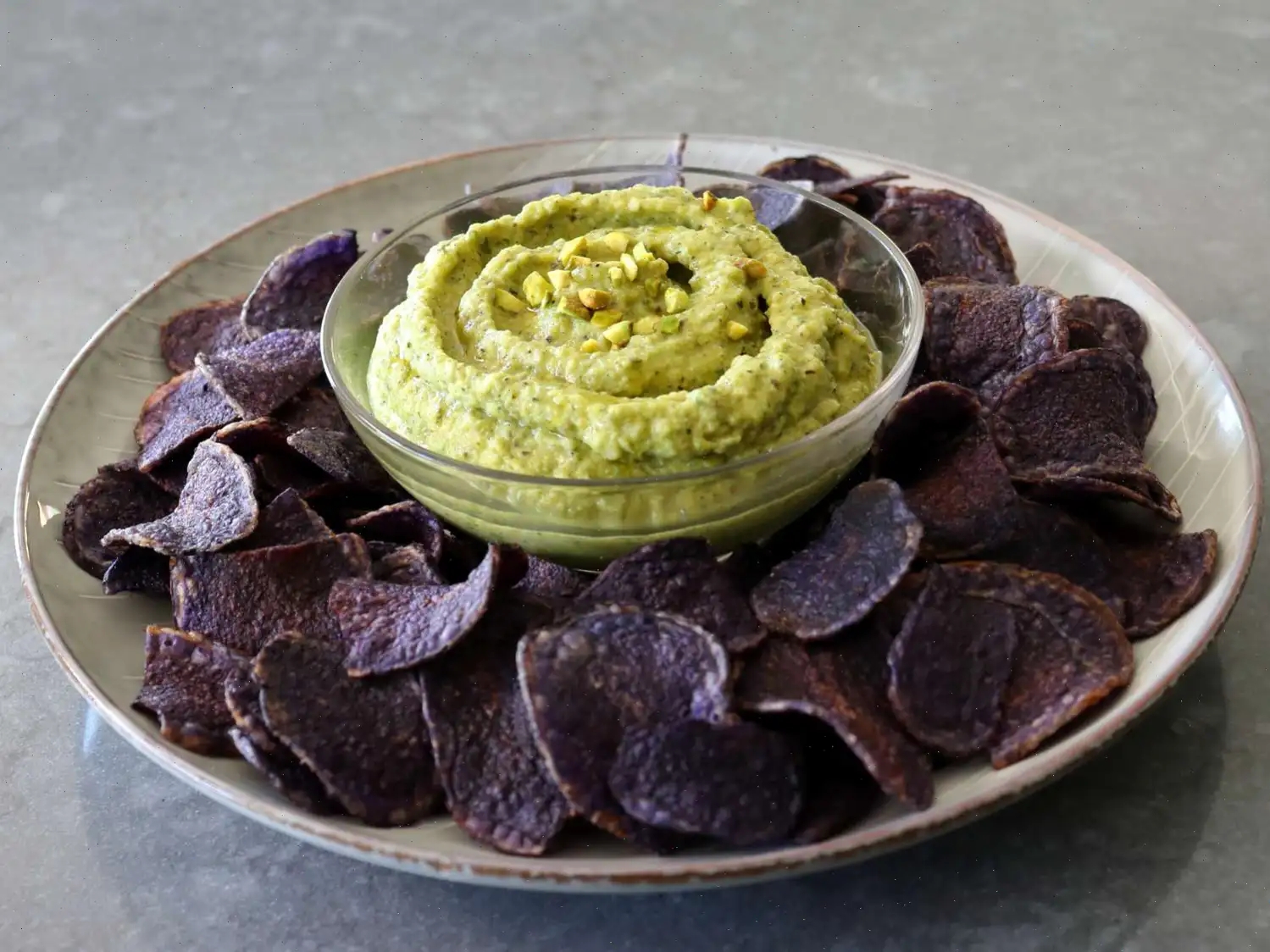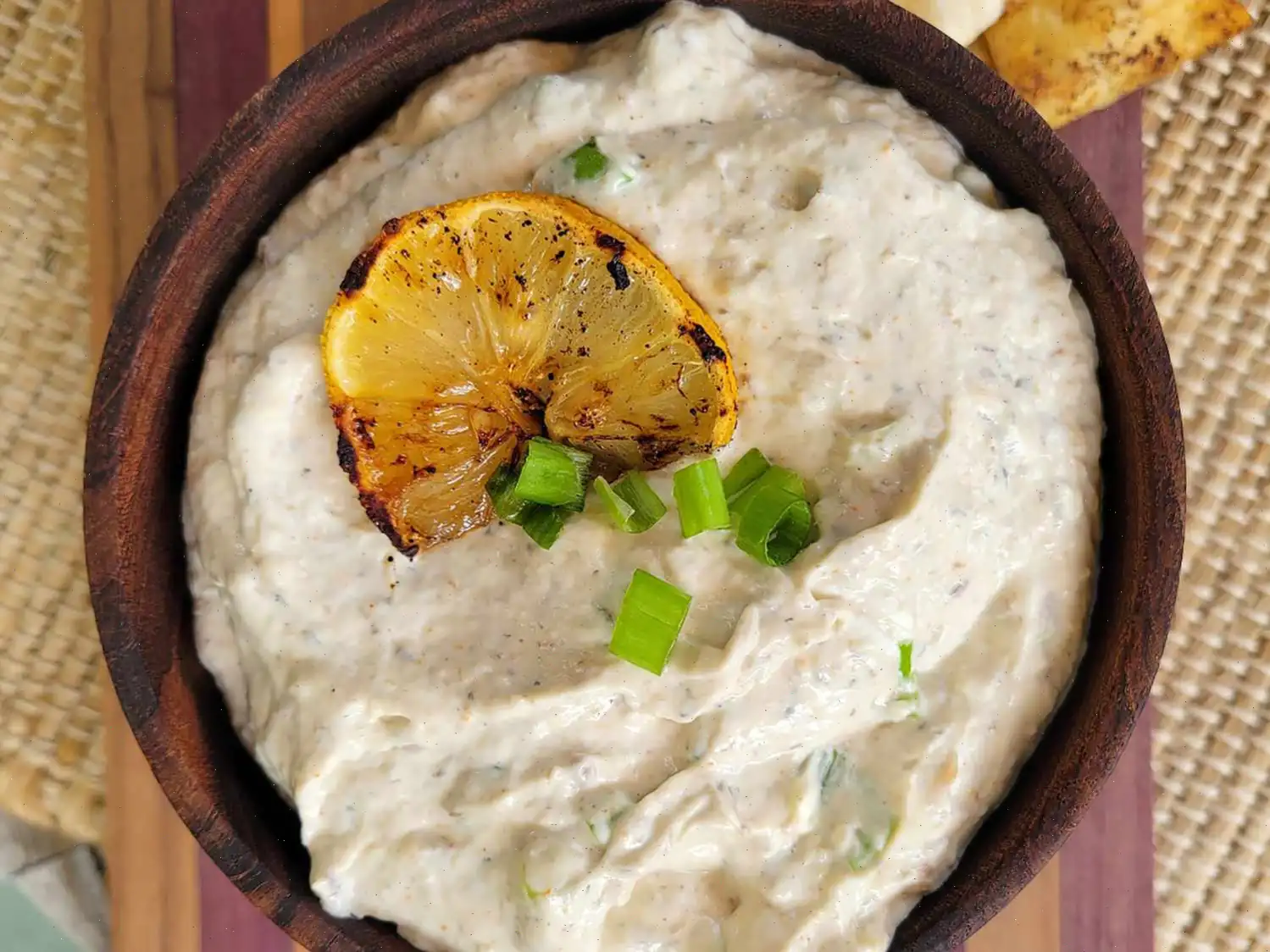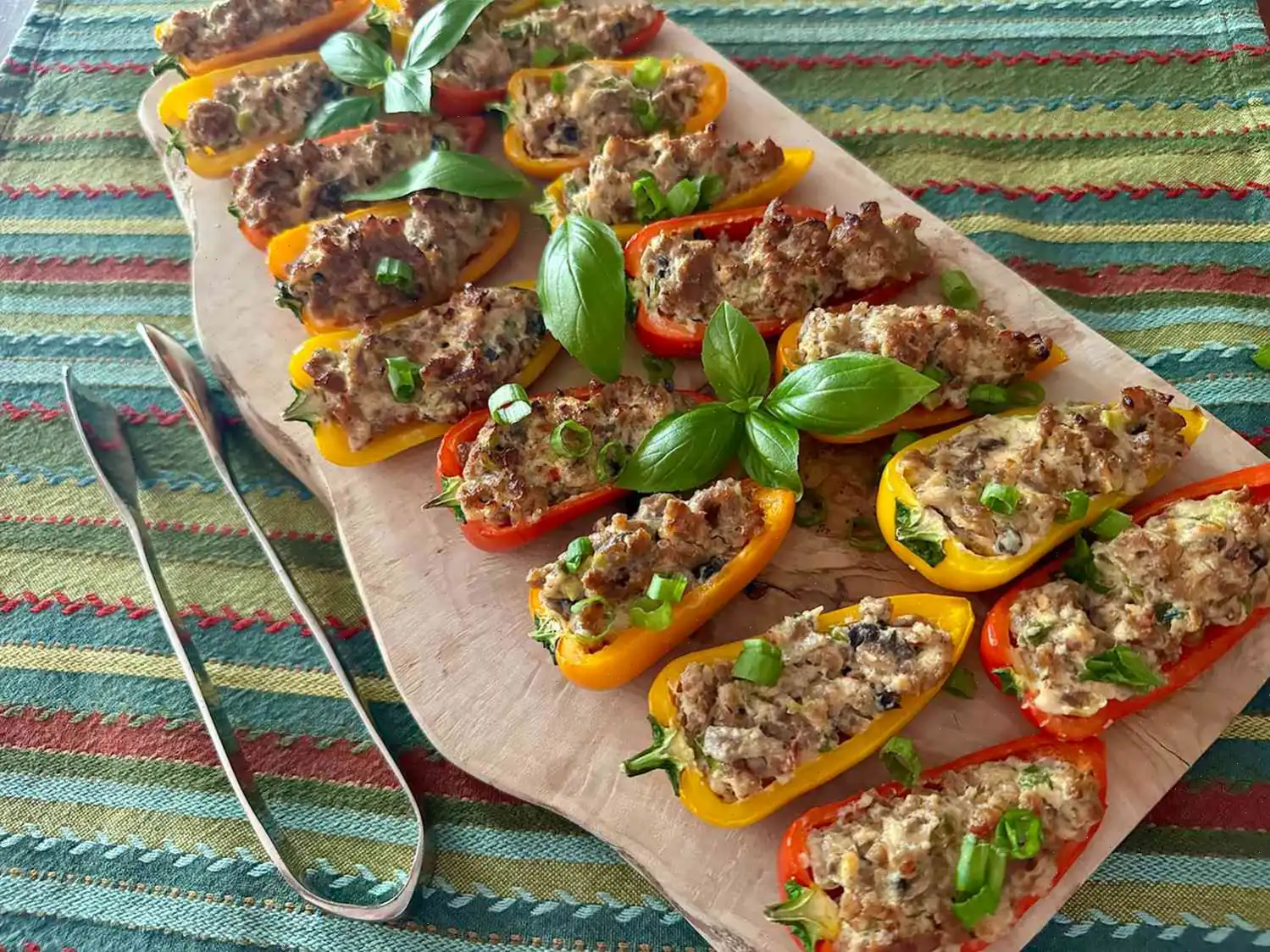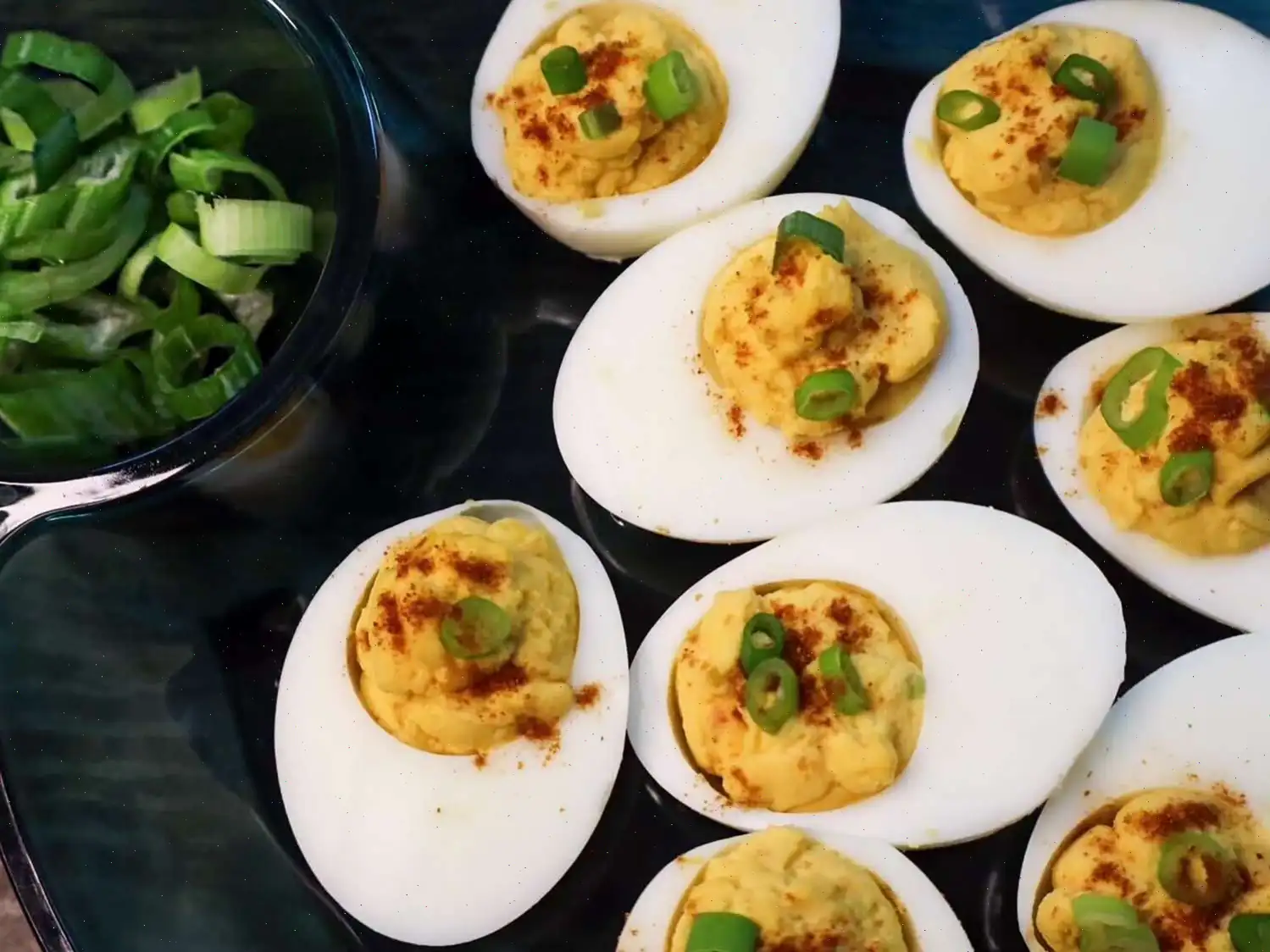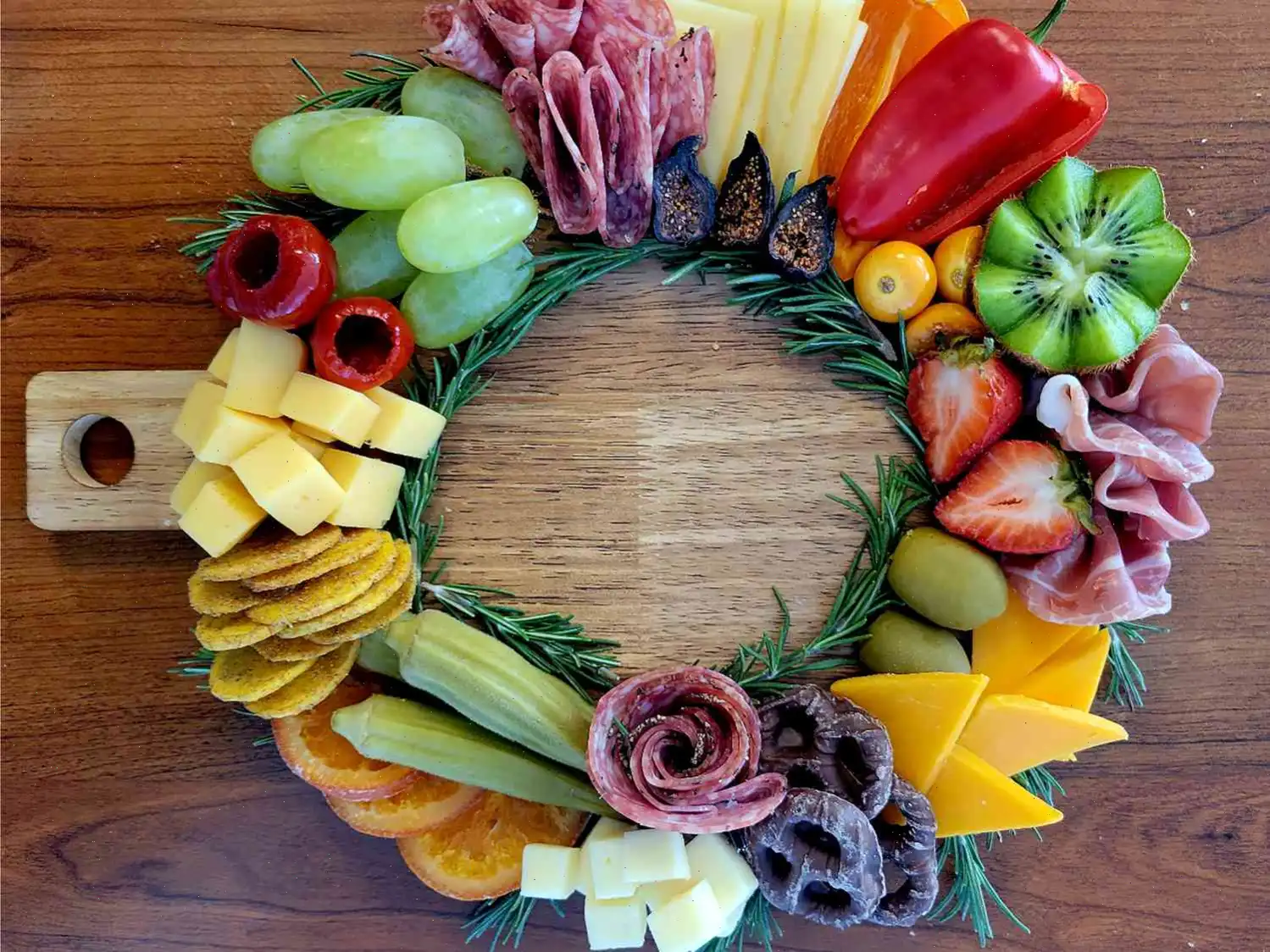
Green No-Bean Hummus Recipe
Hummus has always been a crowd favorite a creamy, flavorful dip that even those who usually avoid legumes can't resist. But heres the twist: this version skips the beans entirely, replacing them with zucchini. The result is a light, green, and delightfully smooth dip that retains all the charm of traditional hummus while being easier on the digestive system.
Chef's Notes: Zucchini might not sound thrilling at first, but after salting, draining, roasting, and blending, it transforms into a rich, flavorful base. This dip will surprise you it doesnt taste like the zucchini from your childhood dinners. And yes, while traditional hummus means chickpeas, were embracing no-bean with pride. The flavor is fresh, vibrant, and absolutely worth trying.
Ingredients
- 2 pounds zucchini
- 2 tablespoons kosher salt, plus extra to taste
- 4 tablespoons olive oil, divided
- 3 cloves garlic, crushed
- 3 tablespoons tahini
- Juice of lemon, plus extra to taste
- 6 fresh basil leaves, sliced
- teaspoon ground black pepper
- teaspoon cumin
- 1 pinch cayenne pepper
Directions
- Trim the ends off the zucchini and cut each into quarters. If the zucchinis are very large, remove the seeds. Cut the zucchini into 1 -inch pieces and place them in a large bowl. Sprinkle with 2 tablespoons of kosher salt and toss well. Let sit for 15-20 minutes, stirring halfway through.
- Transfer the zucchini to a strainer and rinse thoroughly to remove excess salt. Allow to drain completely before moving to a clean bowl.
- Preheat your oven's broiler and set the rack about 6 inches from the heat source. Line a baking sheet with foil. Toss the zucchini with 2 tablespoons of olive oil and arrange in a single layer on the sheet, making sure pieces touch each other.
- Broil until the zucchini start to brown and develop light char marks, about 5-6 minutes. Flip the pieces and broil for another 5-6 minutes until tender but not mushy. Transfer to a strainer and let cool to room temperature, roughly 45 minutes.
- In a blender, combine the cooled zucchini, remaining 2 tablespoons of olive oil, tahini, garlic, lemon juice, basil, teaspoon salt, cumin, black pepper, and cayenne. Blend until smooth. Taste and adjust seasoning as needed. An immersion blender works perfectly as well.
- For the best flavor, cover and chill the hummus before serving. Enjoy!
Nutrition Facts (per serving)
Servings: 16
- Calories: 60
- Total Fat: 5g (7%)
- Saturated Fat: 1g (4%)
- Cholesterol: 0mg
- Sodium: 3mg
- Total Carbohydrate: 3g (1%)
- Dietary Fiber: 1g (4%)
- Sugars: 1g
- Protein: 1g (3%)
- Vitamin C: 13mg (15%)
- Calcium: 20mg (2%)
- Iron: 0mg (3%)
- Potassium: 214mg (5%)
* Percent Daily Values are based on a 2,000 calorie diet. Individual needs may vary. Nutrient information is based on available data; consult a professional for medically restrictive diets.
The Story Behind Green No-Bean Hummus
Green No-Bean Hummus is a modern twist on the traditional Middle Eastern hummus, which is traditionally made with chickpeas. This innovative version replaces legumes with zucchini, creating a lighter, easier-to-digest dip while maintaining the creamy texture and rich flavor of classic hummus. The concept of using vegetables in place of beans likely emerged from the increasing demand for low-carb, vegan-friendly, and legume-free alternatives. Its roots are more contemporary, reflecting the evolution of global culinary trends where health-conscious adaptations of beloved dishes are highly valued.
Regional Variations and Characteristics
Although hummus is originally Middle Eastern, Green No-Bean Hummus has found its popularity primarily in Western countries, particularly in North America. Its flavor profile can vary depending on the herbs and spices used; basil and cayenne pepper give this version a fresh, slightly spicy note that sets it apart from traditional chickpea-based hummus. In Mediterranean regions, similar dips might include roasted vegetables like eggplant or peppers, but zucchini offers a subtle sweetness and creaminess that makes this version uniquely smooth and vibrant green in color.
How It Differs from Similar Dishes
Unlike classic hummus, which relies on chickpeas or other beans as the primary ingredient, this recipe uses zucchini as a base. This significantly reduces the protein content but makes it easier to digest for those sensitive to legumes. Additionally, the flavor is lighter and fresher, with a subtle sweetness from the zucchini that contrasts with the nuttiness of tahini and the brightness of lemon juice. Compared to other vegetable-based dips like baba ghanoush, Green No-Bean Hummus is less smoky and more herbaceous, emphasizing basil and garlic rather than charred flavors.
Where Its Commonly Served
Green No-Bean Hummus is versatile and can be served in a variety of settings. Its often found at casual gatherings, brunches, or as part of a healthy appetizer platter. It pairs well with fresh vegetables, crackers, pita bread, or even as a spread for sandwiches and wraps. Its vibrant green color also makes it visually appealing for buffets, picnic spreads, and party platters, adding both aesthetic and nutritional appeal to any table.
Interesting Facts and Tips
- This hummus is naturally lower in calories and carbohydrates than traditional chickpea hummus, making it a popular choice for low-carb diets.
- Roasting the zucchini before blending enhances its natural sweetness and creates a creamy texture without the need for beans.
- While technically not a true hummus in the classic sense, the name reflects its style and consistency rather than its ingredients.
- Adding herbs like basil or cilantro can dramatically change the flavor, making it adaptable to different regional tastes.
- It can be prepared in advance and stored in the refrigerator for several days, making it convenient for meal prep and entertaining.
Overall, Green No-Bean Hummus is a creative reinvention that blends tradition with modern dietary preferences. Its light, fresh flavor and smooth texture make it a standout addition to any spread, offering a nutritious and visually striking alternative to conventional hummus.
You can listen to this recipe in AI audio format. Simply click the play button below to listen to the content in a format that suits you best. It’s a great way to absorb information on the go!
FAQ about Green No-Bean Hummus Recipe
Comments
Christine Roberts
12/15/2022 02:17:08 AM
Outstanding
Justin Garcia
12/05/2023 04:10:21 PM
Absolutely delightful and incredibly easy to make! I spiced it up with small red chilies for an extra kick, sprinkled with crushed red pepper flakes, and served it alongside SunChips.


